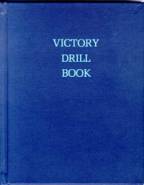You can purchase either the Victory Drill Book alone or the book along with other program components, depending upon your need. The entire program can be used to teach phonics, yet the Victory Drill Book itself can be used along with any other phonics program for practice and developing reading fluency.
The book consists mostly of lists of words arranged according to phonetic relationships. Sentences for practice reading are interspersed. At the end of the book is a summary of thirteen key phonetic rules, eleven spelling rules, a list of nine phonetic vocabulary words we should know (like diphthong, syllable, etc.), and ten rules for syllabication.
Children are to be timed as they practice reading through the lists, improving their speed as words become more familiar. Many children are able to decode yet never become good readers because they are just too slow. They have difficulty making the change from decoding each word to actually reading by sight recognition as fluent readers do. The Victory Drill Book will help many children overcome such problems.
Since some older students who are struggling with reading also have trouble tracking across a line on a page, it might be helpful to place a sheet of paper under a line, then have students read words across the page instead of down the columns.
The book has brief instructions in the front and can be used alone. Other components turn this into a complete phonics program as well as a spelling program.
The Teacher's Guide for Victory Drill Book Reading Program, a necessary tool for those wishing to use Victory Drill as a complete phonics program, contains more detailed teaching instruction, ideas for games, reproducible worksheets on phonics and spelling rules, and spelling charts. A cassette tape will help with pronunciation. Teachers with poor phonetic training will find the cassette useful. The Victory Drill Book Worksheets provide paper and pencil practice to accompany each page in the Victory Drill Book. The worksheets are reproducible, and an answer key is provided.
The overall approach is one of formal academics. A few children (especially those who learn to read rapidly) will balk at reading word lists rather than sentences or stories and will resist this type of drill. Although your child might be one of those few, most children will find this type of drill helpful for developing phonics proficiency.
Aside from its usefulness as a phonics program, Victory Drill Book might also serve as a spelling program for those who like to teach spelling with words grouped according to common rules.
The Victory Pre-Drill Book (to be used prior to the Victory Drill Book) introduces letter, sounds, and blends in a consumable workbook. It progresses only through short vowels and consonants.








